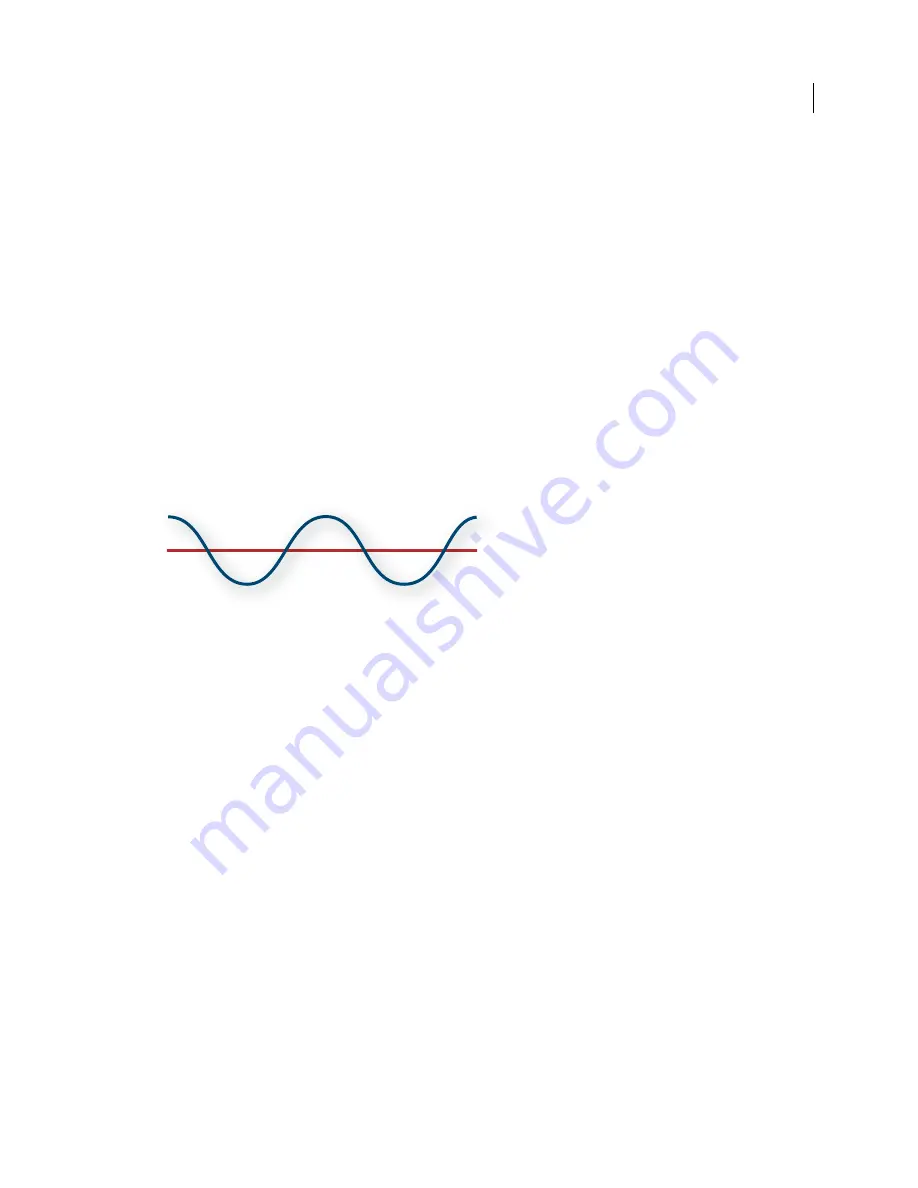
3
Last updated 2/16/2012
Chapter 2: Digital audio fundamentals
Understanding sound
Sound waves
Sound starts with vibrations in the air, like those produced by guitar strings, vocal cords, or speaker cones. These
vibrations push nearby air molecules together, raising the air pressure slightly. The air molecules under pressure then
push on the air molecules surrounding them, which push on the next set of molecules, and so on. As high-pressure
areas move through the air, they leave low-pressure areas behind them. When these waves of pressure changes reach
us, they vibrate the receptors in our ears, and we hear the vibrations as sound.
When you see a visual waveform that represents audio, it reflects these waves of air pressure. The zero line in the
waveform is the pressure of air at rest. When the line swings up to a peak, it represents higher pressure; when the line
swings down to a trough, it represents lower pressure.
A sound wave represented as a visual waveform
A.
Zero line
B.
Low-pressure area
C.
High-pressure area
Waveform measurements
Several measurements describe waveforms:
Amplitude
Reflects the change in pressure from the peak of the waveform to the trough. High-amplitude waveforms
are loud; low-amplitude waveforms are quiet.
Cycle
Describes a single, repeated sequence of pressure changes, from zero pressure, to high pressure, to low pressure,
and back to zero.
Frequency
Measured in hertz (Hz), describes the number of cycles per second. (For example, a 1000-Hz waveform has
1000 cycles per second.) The higher the frequency, the higher the musical pitch.
Phase
Measured in 360 degrees, indicates the position of a waveform in a cycle. Zero degrees is the start point,
followed by 90º at high pressure, 180º at the halfway point, 270º at low pressure, and 360º at the end point.
Wavelength
Measured in units such as inches or centimeters, is the distance between two points with the same degree
of phase. As frequency increases, wavelength decreases.
B
A
C
0
Summary of Contents for 22011292 - Audition - PC
Page 1: ...Using ADOBE AUDITION CS5 5...






















